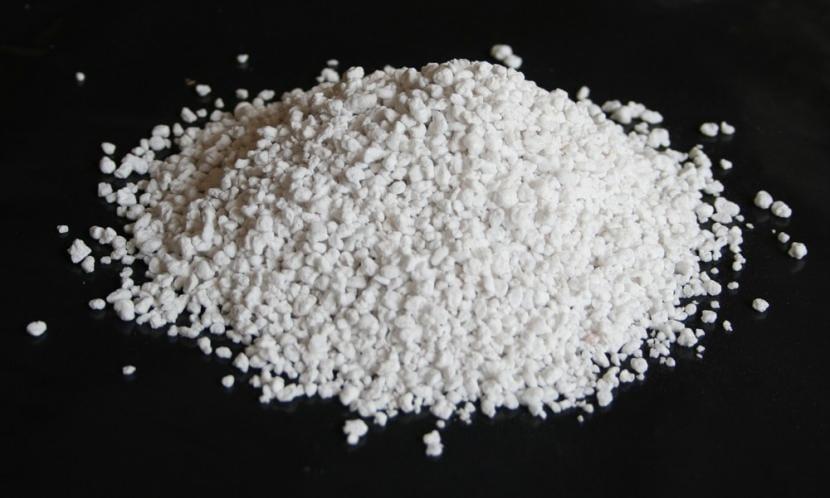Perlite is a naturally occurring siliceous rock that has been expanded or "popped" by heating it to high temperatures. This process creates an lightweight expanded material that has horticultural and construction uses. As angrowing medium, expanded perlite has benefits over other standard soilless mixes due to its lightweight, insulating properties and pH buffering ability. This article will explore expanded perlite as an eco-friendly medium for plant growth.
What is Perlite?
Origin and Composition
Perlite is a rapidly cooled, naturally occurring silica-rich glass that is found in rock formations in many parts of the world. When heated rapidly to temperatures around 870°C - 950°C, the glass spheres that make up perlite particles "pop" and expand up to 20 times their original volume. This expansion process creates an lightweight, porous and particle structure with 75-80% of its volume being air space. The expanded particles remain uniform in shape and size. Chemically, perlite is composed largely of silica (SiO2), with lesser amounts of alumina (Al2O3) and water (H2O).
Processing and Uses
Expanded perlite is processed by first mining the raw perlite rock, then heating it in rotary kilns or fluidized bed furnaces until it pops. The expanded particles are then cooled, graded by size and bagged. The horticultural grade is finely ground and suitable for uses where it will not be visible. Beyond growing media, expanded perlite has many construction and industrial applications where its insulating properties are advantageous. Some key uses include:
- Growing media component in potting soils, germination mixes, hydroponics etc.
- Insulation in cavity wall construction, roof decks and attic floors
- Filtration medium in pool and aquarium filters
- Coolant additive for brake linings in automobiles
- Sound insulation in audio equipment like speakers
- Thermal insulation for ovens, furnaces and hot water tanks
Benefits as a Growing Medium
Lightweight Structure and Drainage
One of the major benefits of Expanded Perlite is its very light bulk density of only 8-32 lbs per cubic foot. This means it takes up much less space in containers than denser mediums like peat moss or vermiculite. Its porous, expanded particle structure also allows for excellent drainage and aeration of plant roots. Excess water drains through quickly versus being retained.
Insulation and Temperature Regulation
The high internal air space of perlite particles makes it a superb insulator. It helps regulate root zone temperatures, protecting plants from temperature fluctuations. Roots stay healthier and grow better in a more stable environment. Perlite also dries out faster than denser mediums after watering.
Nutrient Retention and Buffer Capacity
While perlite itself does not provide nutrients, its negatively charged silica surface has a high cation exchange capacity. It can hold onto nutrient ions like calcium, magnesium and potassium that are vital for plant growth. When mixed with fertilizer or incorporated into potting soils, perlite slow releases these nutrients over time. Its natural buffering action also helps maintain a near-neutral soil pH optimal for most plants.
Sterility and Inert Nature
Expanded perlite particles are essentially inert and do not decompose over time. They start out sterile so do not harbor plant pathogens. This makes perlite an excellent choice for seed starting, cuttings and hydroponic systems where sanitation is important. It also will not nitrogen rob or compete with plant roots for nutrients and water.
Eco-Friendly Attributes
Production from Naturally Abundant Rock
The raw material, perlite rock, is a ubiquitous volcanic glass found globally. Mining has little environmental impact since practices are similar to surface quarrying of landscape rock. Processing simply involves heating the rock to expand it - no chemicals are used or byproducts created.
Reusability and Longevity
Due to resistance to decomposition, perlite maintains its physical properties for decades with proper care and re-use is possible. It does not lose functionality over time like peat moss or coir fiber may. Unused perlite can even be dug back into gardens as a soil amendment at the end of projects.
Sustainable Alternative
Peat mining is devastating to natural ecosystems and generates large carbon emissions. Perlite provides gardeners and growers with an eco-friendly substitute that improves soil structure without harming wetlands. It represents a sustainable choice, especially important as global demand for peat Moss alternatives rises.
Expanded perlite's combination of physical traits including light weight, drainage, porosity and moisture retention make it an excellent choice as an inorganic growing medium component. Mixed with fertilizer or other organic materials like compost, perlite creates well-balanced soilless potting mixes and hydroponic substrates. Its production from an abundant natural rock source and potential for long term reuse also give perlite green benefits over other common grow mediums like peat moss or coconut coir. Those concerned with reducing their gardening footprint will appreciate expanded perlite's eco-friendly profile.
For more Insights, Read –
https://www.insightprobing.com/expanded-perlite-trends-size-and-share-analysis/



